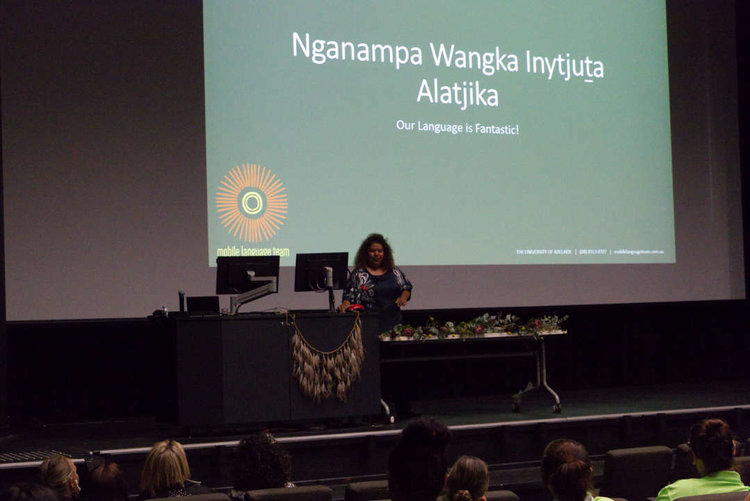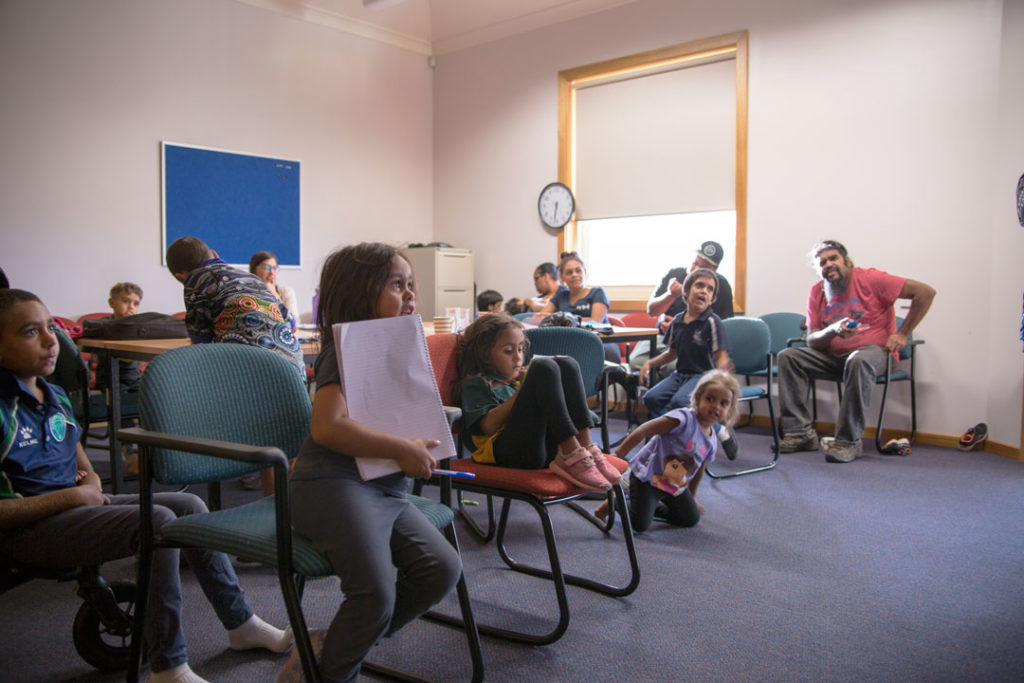BI-LINGUAL LANGUAGE IMMERSION
June 22, 2017
As we move forward in finding ways to make Indigenous languages more widely used in communities around Australia, one things has emerged as a clear decisive factor, immersion in language from a young age has real impacts on language in later life.
The Conversation recently delved into this issue looking at the use of language immersion in bi-lingual schools and kindergartens and the effects this was having on kids and adults use of language in later life.
Over the years, the MLT has strongly advocated for the use of language in schools from an early age and has continually stressed early immersion in language as one of the strongest tools we have in tackling the challenge of encouraging more kids to speak Aboriginal languages. More kids speaking language means more adults speaking language and speaking language creates future careers and pathways in a modern bi-lingual world.

Senior Aboriginal Language Worker and MLT co-manager Karina Lester has taken a lead of this charge, co-convening a conference on indigenous languages in schools in 2016 and pushing hard for a focus on early childhood learning of indigenous languages in national frameworks for languages.
As part of this intiative the MLT has been advocating strongly for the accreditation of Aboriginal speakers in schools, allowing language speakers the oppourtunity to teach their language at schools and develop their skills of communication, interpretation and language delivery.
Speaking the language is just part of the job, understanding how to effectively communicate to non-speakers is also important to bringing everybody onside with the benefits language can in both the schooling community but also the wider community.
Using the motif of ‘learning in your language’ schools and early childhood centres around Australia, especially in remote communities can create not only a healthy language community where language is being spoken by a younger generation, but also career pathways for those who emerge through a flexible schooling system – encouraging and celebrating the use of language.

This healthy language community we speak of reaches out to those non-speakers and shows them the positive results of ‘learning in language’ and allows the entire school community to see first hand the benefits of using language in schools has on students success rates in learning in all subjects, not just language.
To find out more about learning in language, read ‘Why more schools need to teach bilingual education to Indigenous Children’ on The Conversation, or chat to the MLT about partnerships between schools, languages and bi-lingual education (08) 8313 0707.
